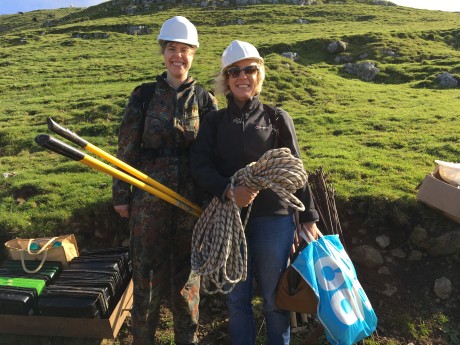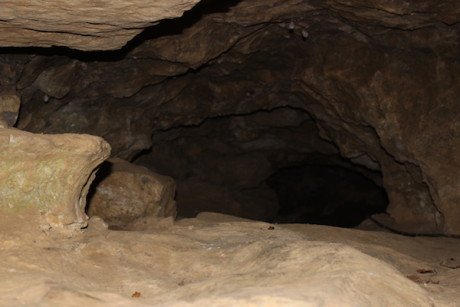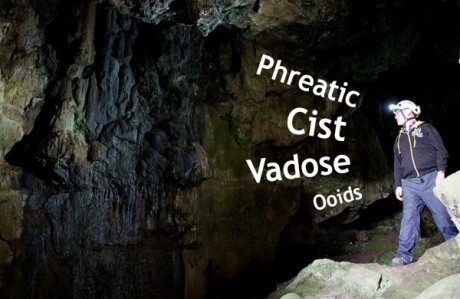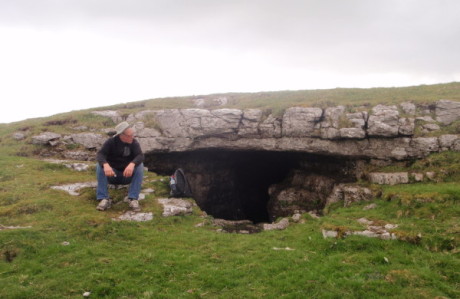
Yorkshire’s Caves are full of wonders. Here’s five we think you’ll fall in love with, and if you do, how to show you care.
You’ve probably heard of the different animal conservation strategies that are going on around the globe, but did you know it applies to caves as well? Caves are natural sediment traps and have in the past attracted animals and humans, all of which leave tell-tale signs behind.
It all adds up to a vast library of information, waiting in storage for archaeologists, palaeontologists, cave scientists and even casual visitors to uncover and explore, opening a vast volume of metaphorical books with information about the past.
The Yorkshire Dales National Park is home to one of the most extensive cave networks in the UK. Some of them are huge open caverns that can be easily reached by casual explorers, some have hidden tunnels that are best enjoyed by joining a local caving group, and some are designated Scheduled Monuments and Sites of Special Scientific Interest. Whatever kind of cave it is, here’s five things you can look out for:
1. Speleothems
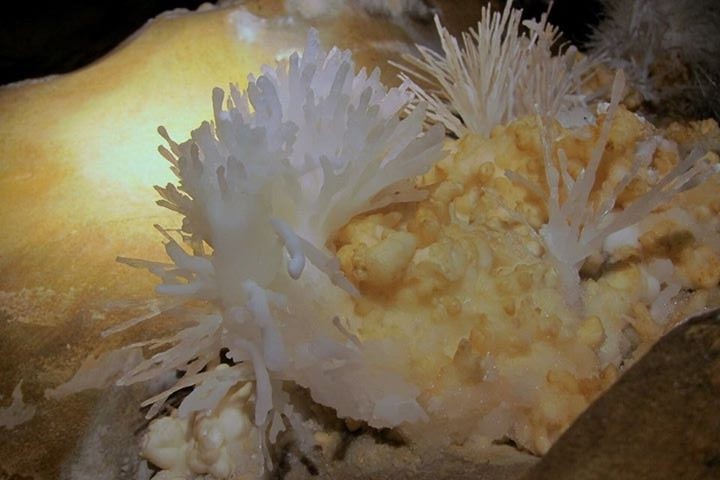
Some speleothems are as beautiful as a coral reef. These ones are actually from Daren Cilau in Wales, but you get similar ones in Yorksire too. Photo credit: Nigel Steel
Yorkshire’s caves are home to some awesome formations (collectively known as speleothems). Made by a cornucopia of ingredients and chemistry, these ‘cave decorations’ are more than beautiful to look at; they can also give reasonably accurate patterns of past climates by analysing Oxygen isotopes contained within.
How to show you care: Look and admire… only those who can resist the temptation to touch will be deemed worthy…
2. Water
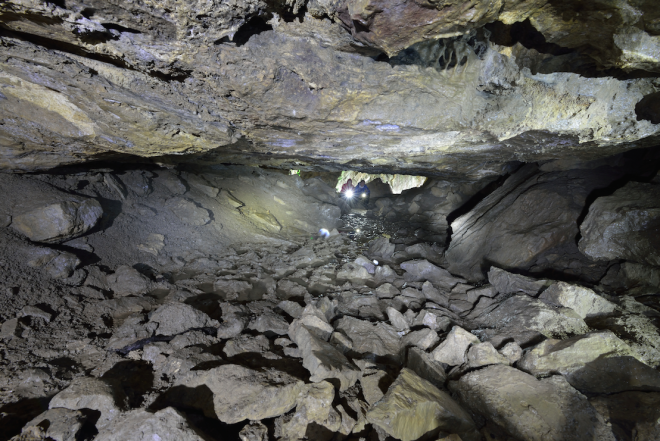
The size of even the biggest boulders are only half as impressive as the power of the water that put them there.
Walk around a cave and you’ll see huge boulders, stones, and pebbles. Many of these are signs that water has shifted things around the cave, and even helped it form. Ice that’s expanded and contracted can cause the roof to collapse, creating huge inner chambers. Powerful floods can dump enormous boulders. And the gentle running of streams or groundwater can leave small pebbles behind. All these different processes in a cave are all useful indicators for the archaeologist and cave scientist.
How to show you care: Find a boulder and stand in awe of the powerful natural forces that put it there.
3. Sediments
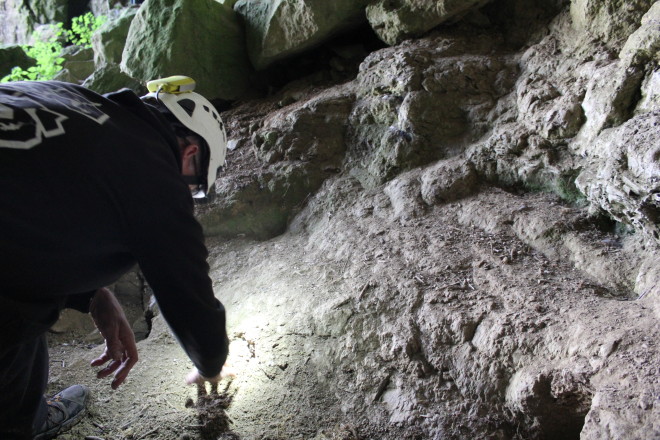
It might not look like much, but the sediments underfoot are like moss and lichen – they’re delicate, and can take hundreds, if not thousands, of years to form
What can sediments tell us? Sediments are laid down in different ways, and by working backwards, scientists can work out what that process was – an active stream, a passive lake or blown in by the wind? Take Victoria cave as an example. This is where scientists found microscopically thin layers of clay, which after decades of debate finally proved there was more than one Ice Age. The problem is, early research ran out of funding, so some of the evidence is still inside the cave’s inner chamber.
How to show you care: Walk only on paths or hard, rocky surfaces to avoid crushing 600,000 years of climate data underfoot…
4. Animal bones
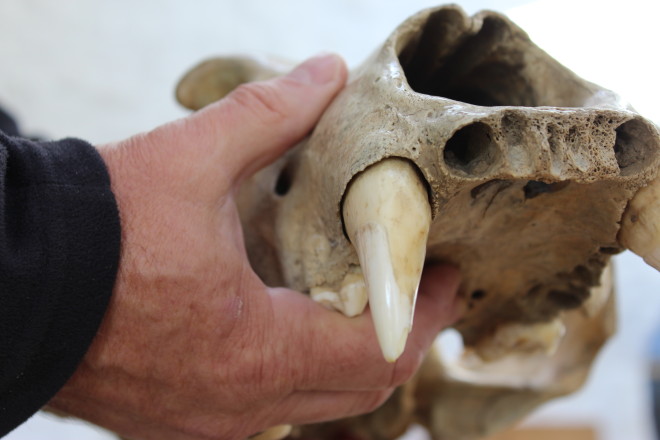
The skull of a brown bear found deep inside Victoria Cave
You would be AMAZED at the different kinds of animal bones that have been found inside Yorkshire’s caves; hyena bones, lion bones, hippo bones, rhino bones, mammoth bones, human bones and even elephant bones. Together, they tell us that 125 000years ago, the Yorkshire Dales were inhabited by a bizarre mix of subtropical and temperate woodland species. More recently (well, 14,000 years ago), brown bears hibernated and eventually in there – archaeologists found their bones which had later been scavenged by wolves!
How to show you care: Many of these bones are now in the Yorkshire Museum, but we’ve also got a digital collection for you to browse. If you’re out in a cave, keep a sharp eye out for animal bones. If you spot any, they’ll probably be pretty recently deceased – but best to leave it where you found it if you’re in any doubt.
5. Human artefacts
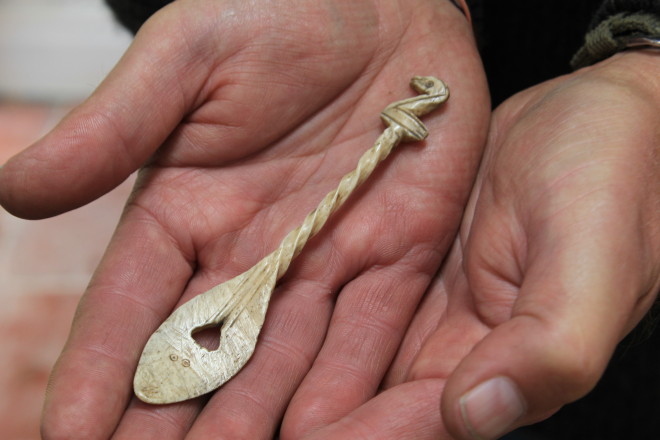
A carved bone ‘spoon’ left inside Victoria Cave by a Romano-British cave cult over 1,000 years ago
Human artefacts show that caves have variously been used as places of religious or tokenistic worship (like Victoria Cave) or as burial sites with spectacular views (like Elbolton Cave), or even just for shelter by passing hunter-gatherers. The position of bones and artefacts is paramount in understanding how they got there and why. Like all archaeological sites it is the position within the strata that gives the artefact true meaning, gives the artefact purpose, and this is one of the reasons why cave conservation is so important.
How to show you care: Take a look at some of the amazing archaeology from inside Victoria Cave
Fallen in love yet?
Yorkshire’s caves really are amazing. Here’s a really great guide to ones you can visit. The Yorkshire Dales National Park is supporting a number of different caving initiatives that look after the caves, and promote public enjoyment and understanding of the veritable treasures to be found within.
In some, like Victoria Cave, you’ll see barriers discouraging you from entering unexcavated parts of the cave. If you really, really feel the urge to cross them and go deeper into the cave, you can join a local caving group, or follow us on Twitter or Facebook to stay in the loop and join us on our next caving adventure…
